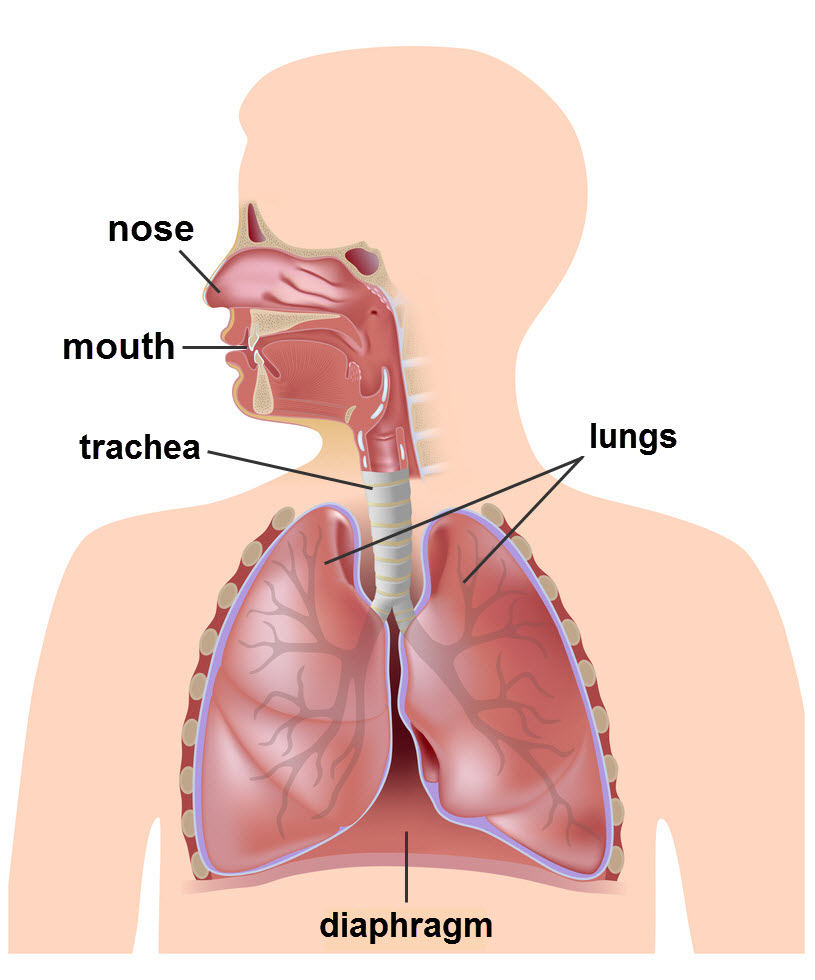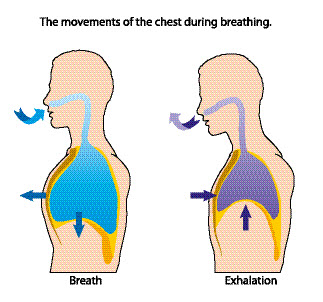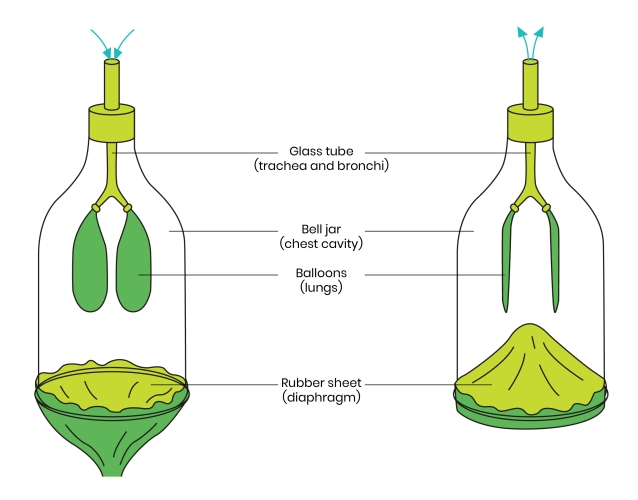Breathing... it is something that we do all the time, every day, without even thinking about. Even as you read this your respiratory system is at work, taking air both in and out of your lungs, but how does it work?
The respiratory system has two very important jobs to do. The first is to supply the blood with oxygen; the second is to remove any waste carbon dioxide from the blood.
The respiratory system involves the mouth, nose, trachea (windpipe), lungs and diaphragm (the layer of muscles found under your lungs).

Breathing In - Inhalation
Right, take a deep breath. As you inhale, the air travels through your nose and mouth, down the trachea and then splits into your two lungs. But that's not all...
If you put your hands on your rib cage, you will notice that they expand up and out as you breathe in, allowing the air to fill your lungs.
Your diaphragm will also contract, pulling downwards, to allow more air into the lungs.
Breathing Out - Exhalation
As you breathe out, the opposite occurs. The exhaled air leaves your lungs, travels up the trachea and then leaves your body through your nose and mouth.
If you put your hands on your rib cage, you will notice that it drops in and down as you breathe out, allowing the air to be pushed out of the lungs.
Your diaphragm will also relax, pulling upwards, allowing more air to be pushed out of the lungs.
This process of breathing in and out is often called ventilation.

Using a model helps us to visualise and explain processes.
Here is an image of the bell jar model - it helps to show us how ventilation occurs:

The different parts of the model represent different parts of the breathing system:
The balloon represents the lungs, the bell jar represents the rib cage, the glass tube at the top represents the trachea and bronchi and the rubber sheet at the bottom represents the diaphragm.
When the sheet is pulled down, this represents the diaphragm contracting and moving down. This increases the volume (space) of the jar and decreases the pressure (fewer particles hitting the jar) causing air to rush into the balloons. This is modelling inhalation.
When the rubber sheet is pushed upwards, this represents the diaphragm relaxing and moving up. The volume of the jar decreases and increases the pressure, causing air to be forced out of the balloons - the balloons deflate. This is modelling exhalation.
In this activity, we are going to describe how a bell jar can be used as a model of breathing.








